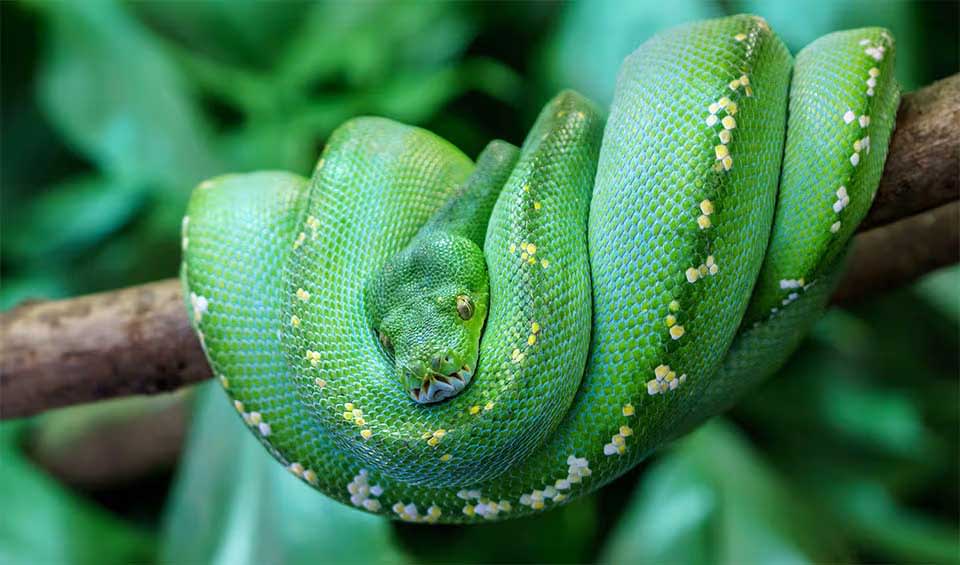Morelia
Characterized by their robust bodies, heat-sensing pits, and powerful constricting abilities
Native primarily to Australia, New Guinea, and Indonesia, these snakes are part of the Pythonidae family and include several well-known species, such as the green tree python (Morelia viridis), carpet python (Morelia spilota), and Amethystine Python (Morelia amethistina). Morelia snakes are characterized by their striking patterns, vibrant colors, and varied habitats, making them a favorite among reptile enthusiasts and a subject of interest for herpetologists.
One of the defining characteristics of the Morelia genus is the wide range of colors and patterns exhibited by its members. The green tree python, for example, is famous for its vivid green coloration, often accented with blue or white spots. In contrast, the carpet python displays intricate patterns of browns, tans, and blacks, resembling a richly woven carpet, hence its name. The Amethystine Python, also known as the scrub python, can show iridescent scales that shimmer with a rainbow-like sheen under the right light, giving it a mesmerizing appearance.
Morelia snakes are highly adaptable and occupy a variety of habitats, from dense rainforests to arid woodlands. They are primarily arboreal, meaning they spend much of their time in trees, but some species are equally comfortable on the ground or in water. This adaptability is reflected in their hunting strategies and diet. Morelia pythons are ambush predators, lying in wait for prey to come close before striking with lightning speed.
This genus also includes some of the largest and most powerful snakes in the world. The Amethystine python, for example, is one of the longest snakes, capable of reaching lengths of over 20 feet. Despite their size, these snakes are generally not considered dangerous to humans, although they are capable of delivering a powerful bite if threatened.
Species in this genus
Carpet python
Despite their intimidating size, they are generally gentle and docile creatures
Green tree python
When they’re babies, they’re not green at all! They can be bright yellow, red, or even orange



